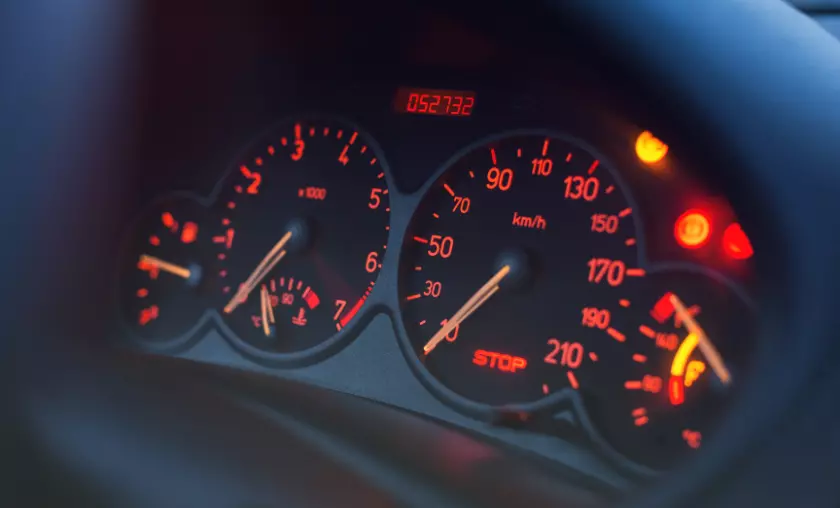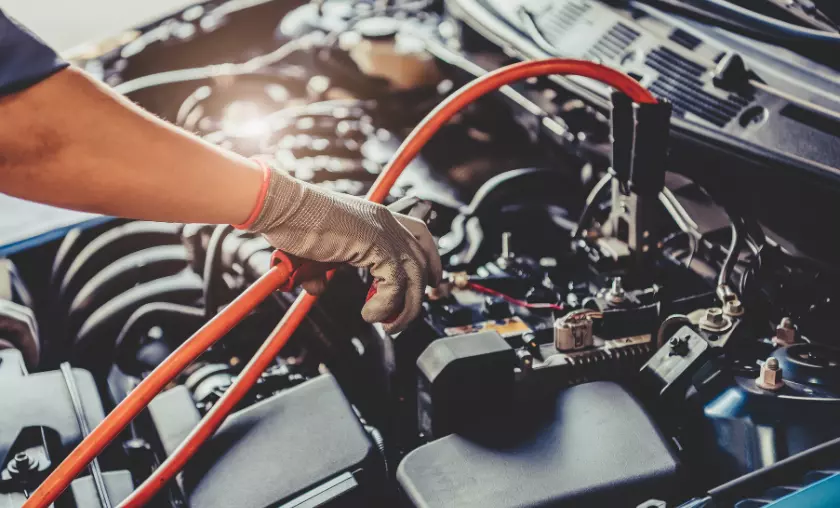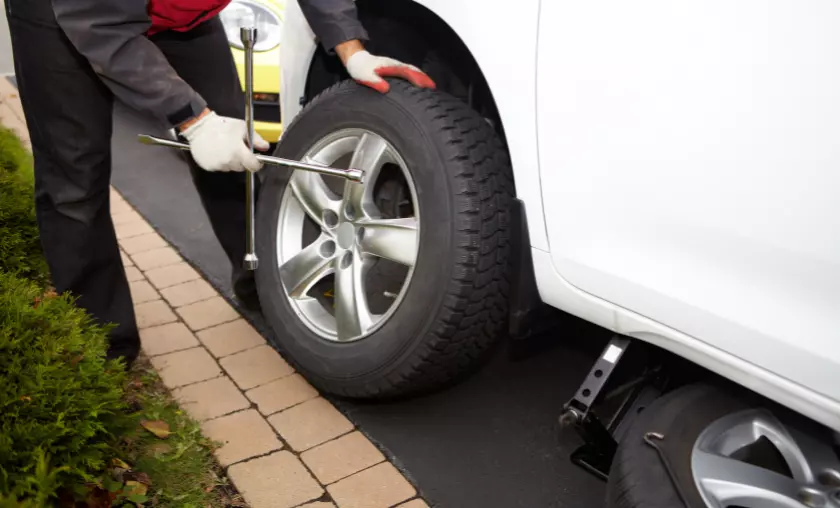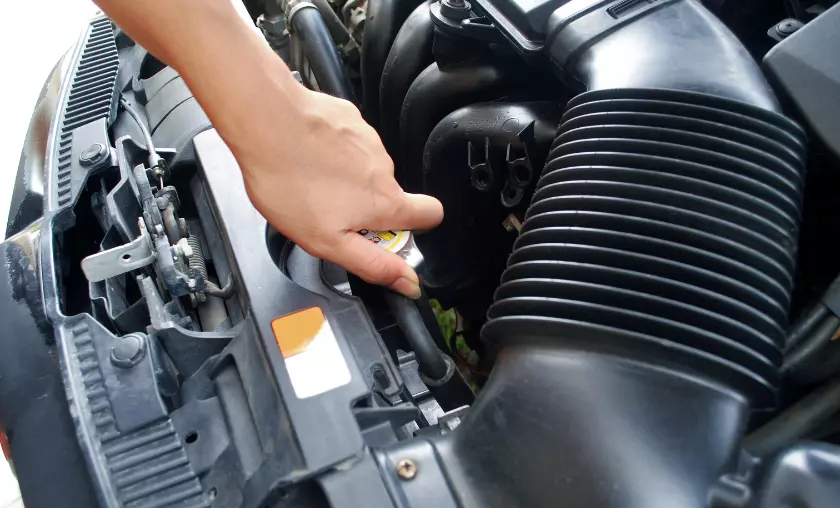Being able to Diagnose Common Car Problems is a crucial skill for any vehicle owner. Understanding the signs and symptoms of issues can help you identify and address problems before they become major, costly repairs. This guide will explore the basics of diagnosing common car problems, from strange noises and warning lights to handling issues and engine troubles.
By learning to recognize these indicators, you can keep your vehicle running smoothly and potentially save money on repairs. Whether you’re a seasoned driver or new to car ownership, this information will empower you to take better care of your vehicle and ensure its reliability on the road.
Diagnose Common Car Problems
DIY Car Solutions
The importance of identifying and addressing common car issues cannot be overstated. Regular maintenance and timely resolution of car problems are essential for ensuring safety on the road. Neglecting issues like brake problems, engine malfunctions, or tire wear can lead to accidents and put lives at risk.
Identifying these issues early through routine inspections and addressing them promptly keeps the driver and passengers safe and prevents potential costly repairs down the road. Moreover, addressing common car issues in a timely manner contributes to the longevity and reliability of the vehicle.
Neglected problems can escalate and cause further damage, resulting in more extensive and expensive repairs. By taking a proactive approach to car maintenance, owners can extend the life of their vehicles and reduce overall ownership costs.
Listening to Your Vehicle
Recognizing Unusual Noises
Listening to your vehicle is a fundamental part of diagnosing car problems. Unusual noises can be early warnings of issues that need attention. These sounds can range from squeaks, squeals, and rattles to clunks and hisses. Each noise might indicate a specific problem, such as worn-out brake pads, a loose belt, or a leak in the exhaust system.
- Squealing Brakes: A high-pitched squeal when you apply the brakes often indicates worn brake pads. Replacing them promptly can prevent damage to the brake rotors.
- Rattling Under the Car: A rattling noise from under your car might suggest loose or damaged exhaust components. This could lead to harmful fumes entering the cabin, so it’s crucial to address it.
- Hissing from the Engine: A hissing sound could signify a coolant or vacuum leak. Overheating or poor engine performance may result if left unattended.
- Clicking While Turning: Clicking sounds when turning often indicate issues with the CV joints. These are essential for steering and should be inspected to prevent steering problems.
- Engine Knocking: A knocking noise from the engine could be due to low-quality fuel, spark plug issues, or more severe problems like engine damage. It’s essential to diagnose and address this promptly to avoid further damage.
Paying attention to these sounds and identifying their origin can help you address potential issues before they escalate, ensuring your car’s continued reliability and safety on the road.
Dashboard Warning Lights
Decoding the Signals
Dashboard warning lights are your car’s way of communicating potential issues. Understanding these signals is crucial for diagnosing car problems. For example, a check engine light may indicate various engine-related issues, while a battery warning light might suggest electrical system problems.
An oil pressure warning could mean low oil levels, and an ABS light might signal issues with the anti-lock braking system. Never ignore these warning lights; they’re your vehicle’s way of asking for attention.
- Check Engine Light: This light can indicate a range of issues, from a loose gas cap to more serious engine problems. It’s best to have it checked by a mechanic to diagnose the specific problem.
- Battery Light: When this light comes on, it usually means an issue with the charging system. It could be a failing alternator or a loose battery cable.
- Oil Pressure Warning Light: This light indicates low oil pressure, which could be due to low oil levels or a problem with the oil pump. Running the engine with low oil pressure can lead to serious engine damage.
- ABS (Anti-lock Braking System) Light: If this light is on, it suggests a problem with the ABS system. While your brakes will still work, the ABS may not function correctly, which could affect your ability to brake safely in certain conditions.
- Airbag Light: This light usually signals an issue with the airbag system. It’s crucial to have this checked because malfunctioning airbags might not deploy in the event of an accident.
When one illuminates, it’s advisable to consult your car’s manual or a mechanic to address the underlying problem promptly.
Fluid Leaks
Identifying the Source
Recognizing and addressing fluid leaks in your car is vital for vehicle safety and longevity. Start by identifying the color and location of the leak. As mentioned earlier, different colors correspond to specific fluids. If you notice a leak, don’t ignore it. Place a piece of cardboard under the vehicle to catch the drips and help identify the color.
Next, consult your car’s manual to understand the fluid’s purpose and potential consequences of low levels. If you’re unsure about the source or how to fix it, it’s wise to seek professional help.
- Engine Oil: Black or brown fluid might indicate an oil leak, often caused by a damaged gasket or oil pan. Low oil levels can lead to engine damage, so address this promptly.
- Coolant: A bright green, pink, or orange fluid may be coolant. Leaks can result from a damaged radiator or hoses. Overheating is a common consequence of low coolant levels.
- Transmission Fluid: Red or brownish-red fluid could be transmission fluid. A transmission fluid leak could lead to gear shifting issues and transmission damage.
- Brake Fluid: Brake fluid is typically clear or yellowish. Leaks can compromise your braking system, so addressing these promptly is critical.
- Power Steering Fluid: This is usually reddish or brownish. A power steering fluid leak can make steering more difficult and affect your vehicle’s handling.
- Gasoline or Diesel Fuel: Leaks of these fluids are usually noticeable by their distinct odor and can pose a fire hazard. Seek immediate assistance.
Ignoring fluid leaks can lead to more extensive and costly damage, so early detection and action are key to keeping your vehicle running smoothly.
Brake Problems
Signs of Wear & Tear
Detecting brake wear and tear signs is crucial for your safety on the road. Common indicators of brake problems include squeaking or grinding noises when you apply the brakes, a soft or spongy brake pedal, and the feeling of the car pulling to one side when braking.
Additionally, if you notice vibrations or shaking in the steering wheel when you brake, it may be a sign of brake issues. Ignoring these warning signs can lead to decreased braking efficiency and potentially dangerous situations.
- Squeaking or Grinding Noises: If you hear these sounds when applying the brakes, it often indicates worn brake pads. Replace them promptly to avoid further damage.
- Soft or Spongy Brake Pedal: This might be due to air in the brake lines or brake fluid leaks. Bleeding the brakes or repairing the leaks can resolve this issue.
- Car Pulling to One Side: This suggests uneven brake pad wear or a brake caliper problem. Ensure both sides of your brakes are wearing evenly and replace any damaged calipers.
- Vibrations or Shaking: If you feel this when braking, it may signal warped brake rotors. Resurface or replace the rotors and ensure proper wheel torque.
- Warning Lights: Modern cars have brake warning lights on the dashboard. If they illuminate, get your brakes inspected immediately, as it could indicate a range of issues, from worn pads to ABS system problems.
If you experience any of these symptoms, having your brakes inspected and serviced promptly by a qualified mechanic is essential to ensure your vehicle’s braking system is in good working order.
Engine Trouble
Diagnosing Performance Issues
Diagnosing engine trouble can be a bit more complex, but it’s essential for keeping your vehicle running smoothly. If you experience poor acceleration, strange noises, or a check engine light, it might point to engine problems.
These issues could stem from anything from a faulty sensor to a worn-out component. To identify the problem, it’s wise to have your vehicle’s computer scanned for error codes and consult a mechanic for a thorough diagnosis.
- Check Engine Light: When the check engine light comes on, it indicates a potential issue with various engine components. Getting a diagnostic scan to identify the specific problem could range from a loose gas cap to more serious engine malfunctions.
- Rough Idling: If your engine idles roughly or stalls frequently, it could be due to issues with spark plugs, fuel injectors, or air filters. Replacing or cleaning these components, as well as ensuring regular maintenance, can often resolve this problem.
- Reduced Power or Acceleration: If your vehicle struggles to accelerate or loses power, it may be due to problems with the fuel system, such as a clogged fuel filter or a malfunctioning fuel pump. Replacing these components can help restore power.
- Overheating: Engine overheating can be caused by issues like a malfunctioning thermostat, a low coolant level, or a faulty radiator fan. Regularly checking coolant levels and addressing cooling system problems promptly can prevent overheating.
- Excessive Noise: Unusual noises from the engine, such as knocking, clicking, or hissing, may indicate issues with various engine components, including the timing belt, valves, or serpentine belt. Identifying and replacing worn or damaged parts can eliminate these noises.
Regular maintenance, like oil changes and air filter replacements, can help prevent many engine-related issues.
Electrical Issues
Troubleshooting Electrical Systems
Diagnosing and addressing electrical issues in your car is crucial for maintaining its overall functionality. Common electrical problems can include malfunctioning lights, a dead battery, or issues with the starter or alternator. When faced with electrical problems, checking the vehicle’s fuses and ensuring they are intact is essential. Replacing bulbs or fuses might solve the problem if lights or components aren’t working.
- Dead Battery: If your car won’t start and you hear a clicking noise when turning the key, it’s likely a dead battery. Jump-starting the battery can provide a temporary solution, but you may need to replace the battery if it keeps happening.
- Malfunctioning Lights: If headlights, taillights, or interior lights aren’t working, check the corresponding fuses and bulbs. Replacing a blown fuse or a burnt-out bulb is usually a straightforward fix.
- Faulty Alternator: Signs of a failing alternator include dimming headlights and a warning light on the dashboard. A mechanic can test and replace the alternator’s voltage output if necessary.
- Starter Issues: A faulty starter can cause a clicking sound when turning the key. Replacing the starter motor or solenoid might be required, which is a job best left to professionals.
- Power Window Problems: If your power windows aren’t working, it could be due to a malfunctioning switch, motor, or regulator. Diagnosing the specific issue and replacing the faulty part can often resolve the problem.
However, for more complex issues like a failing alternator or starter, seeking the expertise of an auto electrician or mechanic is advisable to ensure the safety and reliability of your vehicle’s electrical systems.
Tire Problems
Punctures & Wear
Tire problems are common issues that can affect your car’s performance and safety. Punctures, often caused by nails or sharp objects on the road, can lead to slow leaks and flat tires. Regularly inspecting your tires for foreign objects and maintaining proper tire pressure can prevent these issues. Additionally, worn-out or unevenly worn tires can impact your vehicle’s handling and fuel efficiency.
- Punctures: Avoid driving over debris to prevent punctures, and check your tires regularly for nails or sharp objects. If you find a puncture, repair it promptly or replace the tire if necessary.
- Tread Wear: Monitor your tire tread depth and ensure it meets safety standards. Rotate your tires regularly to promote even wear and extend their life.
- Underinflation: Keep your tires properly inflated according to your vehicle’s specifications. Underinflated tires can lead to reduced fuel efficiency and handling issues.
- Overinflation: Overinflated tires can cause a harsh ride and decreased traction. Check the recommended tire pressure in your owner’s manual or on the driver’s side door jamb.
- Alignment Problems: Misaligned wheels can cause uneven tire wear. If you notice your vehicle pulling to one side or uneven tire wear, have your alignment checked and corrected by a professional.
Rotating your tires and getting them balanced during routine maintenance can help extend their lifespan and ensure a smooth ride.
Cooling System Problems
Preventing Overheating
Maintaining a healthy cooling system is crucial for preventing engine overheating. Regularly check your vehicle’s coolant levels and ensure they are at the recommended levels. Additionally, inspect the radiator and cooling system components for leaks or corrosion.
If you notice any issues, address them promptly to avoid overheating. It’s also wise to follow your vehicle’s recommended coolant change schedule and replace the coolant as needed to keep your engine running at the right temperature.
- Low Coolant Levels: Check your coolant levels regularly and top up as needed to prevent overheating.
- Radiator Leaks: Inspect your radiator for leaks and promptly repair or replace it if you notice any issues.
- Faulty Thermostat: Have your thermostat inspected and replaced if it’s not functioning correctly, as it regulates engine temperature.
- Blocked Radiator: Clean your radiator and cooling system to prevent blockages caused by debris, rust, or scale buildup.
- Worn Belts & Hoses: Replace worn or damaged belts and hoses, as they play a crucial role in the cooling system’s operation. Regular maintenance can prevent unexpected failures.
Regular maintenance and early detection of cooling system problems can save you from potentially costly engine damage.
DIY vs. Professional Help
When to Seek Assistance
Knowing when to tackle car problems yourself and when to seek professional help is essential for both safety and cost-effectiveness. Simple maintenance tasks like changing oil, air filters, or even replacing worn wiper blades are generally suitable for DIY if you have some automotive knowledge and the right tools.
However, it’s often safer and more efficient to consult a professional mechanic for more complex issues like electrical problems, engine troubles, or brake malfunctions. Ignoring serious problems or attempting DIY repairs beyond your expertise can lead to costly damage or compromise your safety on the road.
- Complexity of the Problem: Consider the complexity of the issue. Simple tasks like changing oil or replacing air filters are usually safe for DIY, but complex electrical or engine problems require professional expertise.
- Personal Skill Level: Assess your own automotive knowledge and skills. You may feel confident handling certain repairs if you have experience and the necessary tools. However, if you’re unsure or lack experience, it’s best to consult a professional.
- Availability of Tools & Equipment: Ensure you have the right tools and equipment for the job. Some repairs may require specialized tools that professional mechanics possess.
- Time & Resources: DIY repairs can take longer, especially if you’re learning as you go. Consider whether you have the time and resources to complete the repair properly.
- Risk & Safety: Safety is paramount. If there’s any doubt about your ability to safely complete a repair, it’s best to leave it to a professional to avoid accidents or further damage to your vehicle.
When in doubt, it’s wise to err on the side of caution and let a qualified mechanic diagnose and fix major car issues.
Conclusion
Mastering the ability to diagnose common car problems is a valuable skill that every vehicle owner should strive to acquire. It empowers individuals to take charge of their vehicle’s maintenance, potentially saving time, and money, and ensuring their safety on the road. Regular vehicle maintenance and proactive troubleshooting can help prevent minor issues from evolving into major, costly repairs.
Responsible car ownership includes listening to your car’s sounds, paying attention to warning lights, and conducting routine inspections. Remember that a well-maintained vehicle operates more efficiently and has a longer lifespan, providing you with reliable transportation and peace of mind.
FAQ’s
How Can I Determine if My Car Has a Faulty Alternator?
Signs of a faulty alternator include dimming headlights, a dead battery, warning lights on the dashboard, and unusual electrical issues. Testing the alternator’s voltage output or seeking a professional diagnosis can help confirm alternator problems.
What Are the Common Symptoms of a Failing Transmission?
Symptoms of a failing transmission include delayed or rough gear shifting, slipping gears, and unusual noises like whining or clunking. Diagnosing transmission issues often requires a professional assessment due to their complexity.
How Can I Identify Issues With the Car’s Cooling System?
Cooling system problems may manifest as engine overheating, coolant leaks, or unusual smells. Monitoring the temperature gauge, checking for coolant puddles under the car, and inspecting the radiator and hoses can help identify cooling system issues.
What Causes Brake Problems, and How Can I Diagnose Them?
Brake problems can result from worn brake pads, brake fluid leaks, or issues with the brake system. Signs of brake trouble include squeaking or grinding noises, a soft brake pedal, or a vibrating steering wheel when braking. Promptly addressing these symptoms through a brake inspection is crucial for safety.
How Can I Diagnose a Battery-related Issue in My Car?
If your car struggles to start, the headlights are dim, or you notice a foul odor resembling rotten eggs, it may indicate a battery problem. A simple voltage test or a professional inspection can diagnose battery issues.
To Read More Similar Articles, Click Here.
Thanks for Visiting Our Website. If You Appreciate Our Work, Kindly Show Us Some Support in Our Comments Section 🙂





